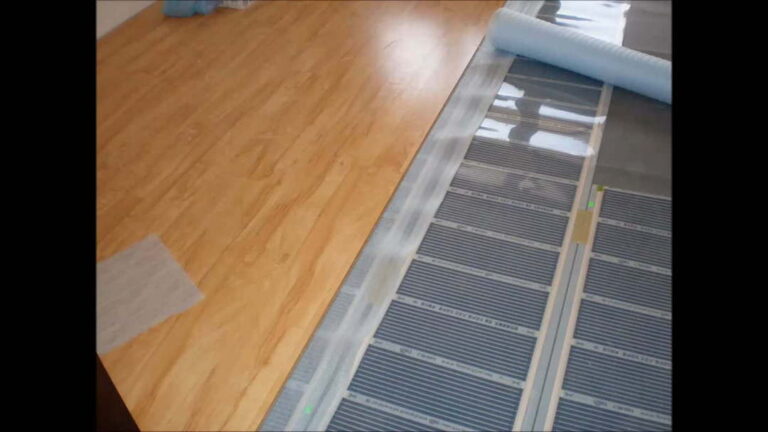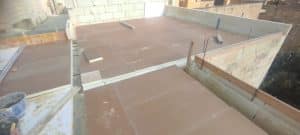When it comes to modern home comfort, underfloor heating sheets are one of the most effective solutions available. However, the true magic lies not just in the installation—but in knowing how to control underfloor heating sheet temperature effectively.
Whether you’re looking to cut energy costs, maintain consistent warmth throughout your home, or simply get the most out of your investment, understanding the nuances of temperature control is key. And in Malta’s mild winters and variable spring months, being smart about heating is essential—not just for comfort, but also for your wallet.
In this post, we’ll walk you through everything you need to know about how to control underfloor heating sheet temperature, why it matters, and how it can make your home more energy-efficient and comfortable.
Why Temperature Control Matters for Underfloor Heating Sheets| How to Control Underfloor Heating Sheet Temperature
Before we explore how to control underfloor heating sheet temperature, let’s talk about why it matters in the first place.
Underfloor heating sheets are thin, energy-efficient electrical mats installed beneath your flooring. They heat up and radiate warmth evenly through the surface above—be it tiles, laminate, or engineered wood. This form of underfloor heating is not only luxurious but also functional and discreet. However, without the right controls in place, you risk overheating, high energy bills, or uneven heating zones.
For Maltese homes—where insulation can vary drastically and heating is needed for only part of the year—proper control ensures:
Energy efficiency
Longevity of your flooring
Comfort without overheating
Lower electricity bills
The good news? With the right tools and techniques, it’s easy to take full control.
1. Use a Programmable Thermostat for Precision Control| How to Control Underfloor Heating Sheet Temperature
The most effective way to manage how to control underfloor heating sheet temperature is through a programmable thermostat. This device allows you to pre-set heating schedules based on your daily routines.
For example:
Set your floors to start warming up at 6:00 AM, so by the time you’re out of bed, your bathroom tiles are toasty.
Program them to lower the temperature automatically when you leave for work and increase again by evening.
Why It Works
Programmable thermostats prevent energy waste and help maintain a consistent temperature—ideal for Malta’s moderate climate, where you often just need a few degrees of warmth rather than intense heating.
Tip:
Look for models with adaptive learning. These will “learn” how long it takes your floor to heat up and adjust accordingly. Expect to pay around €75–€120 for a high-quality unit.
2. Install a Smart Thermostat for Remote & Automated Control| How to Control Underfloor Heating Sheet Temperature
If you love tech or already use smart home systems, then controlling your underfloor heating sheet temperature via a smart thermostat is the way to go. These Wi-Fi-enabled devices connect to your smartphone or voice assistant (like Alexa or Google Home), giving you control no matter where you are.
Key Features:
Control each room individually
Set temperatures remotely while you’re at work or traveling
Receive energy usage reports
Geo-fencing: turns heating on/off based on your phone’s location
This is especially useful in Malta’s coastal towns or countryside villas, where you might only need heating on specific days.
What to Expect:
Installation is quick, and smart thermostats cost between €130–€250 depending on brand and features.
3. Use Floor Sensors for More Accurate Readings| How to Control Underfloor Heating Sheet Temperature
Most standard thermostats only measure air temperature, but underfloor heating works best when floor temperature is the focus.
By connecting a floor sensor to your system, you gain more accurate data—and, therefore, better control. Floor sensors ensure your surfaces never overheat, which is critical for materials like engineered wood or luxury vinyl tiles that have temperature limits.
Why This Matters:
In Malta, many homes have tile or stone flooring, which can get very warm. A floor sensor helps prevent damage and unnecessary energy consumption.
Most thermostats support external sensors, which cost about €20–€50.
4. Set Temperature Limits for Safety and Efficiency| How to Control Underfloor Heating Sheet Temperature
One of the best practices when learning how to control underfloor heating sheet temperature is to define maximum and minimum thresholds.
These can be set through your thermostat to:
Prevent overheating (especially under rugs or furniture)
Maximize energy savings
Keep pets and children safe from excessively hot surfaces
Suggested Settings:
Living areas: 22–25°C
Bathrooms: 25–28°C
Bedrooms: 18–20°C
In Malta’s climate, you rarely need more than 25°C floor temperature. Anything above that can lead to discomfort and high energy bills.
5. Zoning: Only Heat Where You Need It| How to Control Underfloor Heating Sheet Temperature
Zoning is a game-changer when it comes to how to control underfloor heating sheet temperature across larger homes or multi-room setups. Instead of heating the entire floor space, you divide your home into zones—each with its own thermostat and settings.
This is perfect for:
Heating bathrooms in the morning
Keeping bedrooms cool during the day
Saving energy in unused guest rooms
Installation:
Most modern systems offer zoning options, either through separate thermostats or smart apps. Expect an additional €100–€200 per zone, depending on controls.
6. Monitor Energy Usage & Adjust Accordingly| How to Control Underfloor Heating Sheet Temperature
Keeping tabs on your energy usage allows you to fine-tune how you use your system. Many thermostats now come with apps that show you:
Daily/weekly energy consumption
Heating patterns
Suggestions for optimization
In Malta, where electricity prices can vary, this level of detail can make a real difference. You’ll know exactly when to adjust settings and where you’re overspending.
7. Regular Maintenance and System Checks| How to Control Underfloor Heating Sheet Temperature
Finally, while underfloor heating sheets are low-maintenance, routine checks ensure the system stays responsive and efficient.
Every six months, you should:
Check thermostat calibration
Ensure floor sensors are working correctly
Clean any dust or debris from control units
Inspect electrical connections
If you suspect something is off or need help fine-tuning your settings, we’re here to help. You can buy underfloor heating sheets or schedule a control setup service by contacting us directly at https://kibitec.com/contact-us/
Bonus: Are You Using the Right Type of Flooring?| How to Control Underfloor Heating Sheet Temperature
Believe it or not, your choice of flooring also affects how well you can control temperature. Materials with high thermal conductivity—like ceramic tiles or stone—heat up faster and retain warmth longer.
If you’re using carpets or wood, make sure they are underfloor heating-compatible, and always set temperature limits to prevent damage.
Want to know more about floor compatibility? Check out this guide on underfloor heating.
Ready to Gain Full Control Over Your Heating?| How to Control Underfloor Heating Sheet Temperature
Now that you know exactly how to control underfloor heating sheet temperature, it’s time to take action.
💬 Need expert help? Reach out now at https://kibitec.com/contact-us/
🔧 Want to upgrade or install a new system? Check out our underfloor heating sheet services in Malta here:
👉 https://kibitec.com/underfloor-heating-sheets-malta/
8. Use Adaptive Algorithms and Self-Learning Systems| How to Control Underfloor Heating Sheet Temperature
Modern smart thermostats do more than just follow a schedule—they learn your habits and optimize heating patterns automatically. This is especially useful in homes with unpredictable routines.
How It Works:
Adaptive thermostats collect data on:
How long it takes each room to heat up
How outdoor temperatures affect indoor warmth
When you’re most likely to be home or away
Over time, they create a personalized heating plan. So instead of constantly adjusting settings, your system will anticipate your needs and respond in real-time.
In Malta, this means your underfloor heating will adapt to warm spring mornings or sudden winter chills without overdoing it.
Top brands that offer adaptive algorithms include Heatmiser Neo, Nest Learning Thermostat, and Tado. Prices range from €180–€300, depending on functionality.
9. Don’t Forget Seasonal Adjustments
While Malta doesn’t experience harsh winters, there’s still a need to adjust your system seasonally for optimal performance.
Here’s How:
Autumn: Begin reactivating your system and checking settings.
Winter: Program higher baseline temperatures, especially during cold snaps.
Spring: Slowly reduce usage and let the thermostat “coast” in standby or eco mode.
Summer: Turn off heating entirely unless you have integrated cooling (some advanced systems do offer cooling features).
Keeping your system aligned with the seasons helps reduce strain, extend equipment life, and lower your electric bill.
10. Insulation Makes a Huge Difference
One overlooked factor in controlling your underfloor heating sheet temperature is insulation—especially subfloor insulation.
Even the most sophisticated thermostat can’t do much if your home is leaking heat.
In Malta, where traditional stone buildings and older construction may lack insulation, adding thermal boards beneath your underfloor heating sheets can drastically improve response time and reduce energy loss.
Benefits of Subfloor Insulation:
Faster warm-up times
Lower energy consumption
More consistent temperatures
Expect to invest around €10–€15/m² for high-performance thermal insulation boards.
11. Combine Heating with Floor Surface Response Timing| How to Control Underfloor Heating Sheet Temperature
Different flooring materials respond differently to heat. Understanding this helps you anticipate warm-up times and adjust your thermostat accordingly.
| Flooring Type | Warm-Up Speed | Suggested Max Temp | Comments |
|---|---|---|---|
| Ceramic Tile | Fast | 29–30°C | Ideal for bathrooms/kitchens |
| Natural Stone | Fast | 28–30°C | Holds heat longest |
| Laminate Flooring | Medium | 26–27°C | Check manufacturer compatibility |
| Wood Flooring | Slow | 25°C max | Use low-temp settings |
| Vinyl | Fast | 27–28°C | Must be underfloor heating rated |
In Malta, where tiled floors are common, warm-up tends to be quick—just 20 to 30 minutes. But with wood or vinyl, it may take up to an hour, requiring smarter pre-scheduling.
12. Use Boost Mode When You Need Quick Heat| How to Control Underfloor Heating Sheet Temperature
If you suddenly need warmth—say, an unexpected rainy morning—some systems offer a Boost Mode or Rapid Heat Function. This temporarily overrides your standard settings to deliver quick heat for a short period.
Warning: Overusing boost mode may spike energy usage, so use it sparingly. Ideal for when guests arrive, or if you just want a warm floor fast before a shower.
13. Educate Your Household| How to Control Underfloor Heating Sheet Temperature
Surprisingly, one of the most effective tips for controlling temperature is household awareness. Make sure everyone in the home knows:
Where the thermostats are
How to adjust the temperature without constant overrides
Why scheduled heating is more efficient
Especially in family homes or rental properties in Malta, educating users can avoid unnecessary adjustments and energy waste.
Pro tip: Label your thermostats clearly by room and usage times. It avoids confusion and maintains consistency.
14. Monitor and Maintain Your System Annually| How to Control Underfloor Heating Sheet Temperature
Even the best heating systems need a little care. To keep your control system responsive:
Recalibrate thermostats once a year
Check floor sensors and wiring
Update firmware on smart devices
Verify insulation hasn’t been compromised
This is particularly important in Malta’s coastal areas where humidity and salt air can affect electronics over time.
We recommend scheduling a yearly inspection, especially before winter kicks in. You can book a check-up or inquire about servicing by contacting us directly at https://kibitec.com/contact-us/
15. Try Multi-Level Integration for Maximum Comfort| How to Control Underfloor Heating Sheet Temperature
For larger homes or villas in Malta, integrating underfloor heating with other smart systems can create a fully automated climate environment.
Some integration ideas:
Sync with window sensors to turn off heating when ventilation is detected
Use motion detectors to activate heating only when a room is in use
Link to weather forecasts for predictive adjustments
Though this requires advanced setup, it pays off in full control and energy savings. If you’re building or renovating, now is the perfect time to consider a multi-system installation.
Conclusion: Take Charge of Your Home Comfort| How to Control Underfloor Heating Sheet Temperature
Now that you’ve learned the essential and advanced techniques for how to control underfloor heating sheet temperature, you’re equipped to make smarter, more efficient choices.
Whether you’re looking to keep your toes toasty in winter, reduce heating bills, or just take advantage of cutting-edge smart tech—it’s all within reach.
🔧 Check Out Our Service
Looking to install or upgrade your underfloor heating system in Malta?
👉 Explore our full underfloor heating solutions here
💬 Contact Us for Expert Help
Whether you need installation, advice on thermostat setup, or a maintenance check, we’re here to help.
📞 Get in touch with our team today: https://kibitec.com/contact-us/




